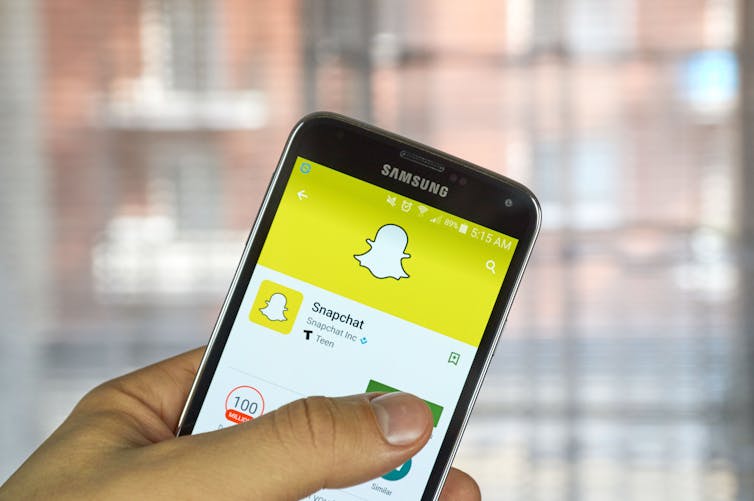Four of the largest school boards in Canada are suing the companies behind popular social media apps Instagram and Facebook, Snapchat and TikTok. According to the Ontario boards, students are “experiencing an attention, learning and mental health crisis because of prolific and compulsive use of social media products.”
The school boards are collectively seeking over $4 billion in damages. Boards say they’re facing financial strain due to providing increased mental health supports for students as well as diverting resources to monitor social media related to threats or harassment.
Some observers have suggested it should be the responsibility of parents and teachers to control children’s social media use. But the problem is that for too long we have been trying to individualize solutions to a collective problem.
‘Social deprivation’
How social media negatively impacts kids’ mental health has been meticulously outlined in a new book by social psychologist Jonathan Haidt of New York University, The Anxious Generation: How the Great Rewiring of Childhood is Causing and Epidemic of Mental Illness. In the book, Haidt discusses four ways social media is harming children:
Social deprivation, whereby the time children spend on social media has displaced opportunities to form more authentic personal connections;
Sleep deprivation, as social media use has been tied to reduced sleep duration and poorer sleep quality;
Attention fragmentation, as students are continually bombarded by messages and notifications, compromising their ability to focus.
Finally, addiction: tech companies are intentionally designing their social media apps in ways that exploit the vulnerabilities of children.
Haidt documents how internal documents revealed by former Facebook employee and whistleblower Frances Haugen show an employee presentation about why teens and young adults choose Instagram (owned by Facebook):
“Teens’ decisions and behaviour are mainly driven by emotion, the intrigue of novelty and reward. While these all seem positive, they make teens very vulnerable at the elevated levels they operate on. Especially in the absence of a mature frontal cortex to help impose limits on the indulgence of these.”
In Haidt’s analysis, it’s no mystery why we are seeing such sharp declines in youth mental health.
Schools’ resource constraints
According to the 2021 Ontario Student Drug Use and Health Survey, the proportion of students reporting poor or fair mental health and the proportion of students experiencing serious psychological distress have both more than doubled since 2013.

As claimed by the Canadian school boards, it has largely fallen on schools to address these issues. To their credit, schools have tried to provide students with access to psychologists, social workers, youth workers and mental health specialists, but there is only so much they can do given their resource constraints.
According to data from the Annual Ontario School Survey, 95 per cent of schools report needing additional resources to support the mental health and well-being of students.
Boards allege the conduct of social media companies has been “negligent” and they are unfairly bearing the brunt of the “learning and mental health epidemic” caused by their apps.
Detrimental impact on learning
Phones and social media use are also clearly having a detrimental impact on student learning: The most recent results of the OECD’s PISA study show that math, reading and science scores have been plummeting over the last decade in Canada and other developed countries, due in large part to “technology used for leisure rather than instruction, such as mobile phones.”
This corresponds with a 2023 study led by researchers from the University of Michigan that tracked the phone use of 200 children (ages 11 to 17) over the course of a week.
It found that during the school day, the devices were used for educational purposes less than two per cent of the time. Rather, the most common uses of phones during school hours were social media (32 per cent), YouTube (26 per cent) and gaming (17 per cent).
Existing ban mostly symbolic
Ontario Premier Doug Ford has expressed surprise at the lawsuit, stating: “We banned cellphones in the classroom, so I don’t know what the kids are using.”
However, the reality is that Ontario’s ban has been mostly symbolic. The reason for this is twofold. First is the way the ban was constructed: it allowed an exception for when the phones were being used “for educational purposes.”

Second, many students are unable or unwilling to comply with restrictions on their use — something hardly surprising since social media apps are designed to be as addictive as possible. That means it has been left up to individual teachers to enforce restrictions in their classrooms, and resistant students aren’t provided with clear and consistent expectations. Meanwhile, some parents say their children need their devices.
Enormous resources spent engaging users
While some say it’s up to individual children to fight these temptations, individual parents to better monitor their kids and individual teachers to get control of their classrooms, we must remember that the companies behind popular social media platforms are among the wealthiest on the planet. They use their enormous resources to render attempts at individual willpower futile.
Read more: 'Never-ending pressure': Mothers need support managing kids' technology use
Change may come from the courts or through the court of public opinion. Apart from whether companies are legally held responsible, reversing the harms being inflicted on our children by social media is going to require collective action among educators, parents and policymakers.

